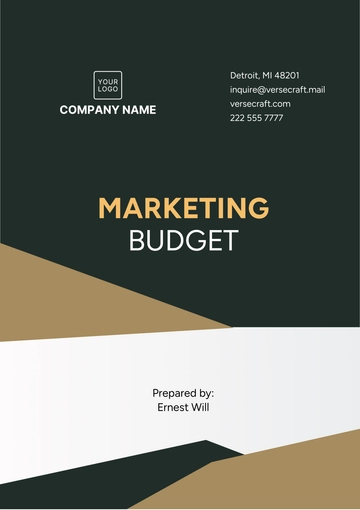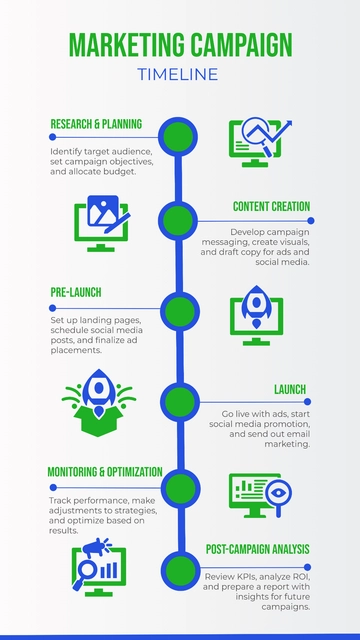Free Creative Strategy Outline for Advertising Pitch

Executive Summary
A. Objective: Launch an ambitious, integrated advertising campaign for [Your Company Name]'s latest innovation, the [Product Name], aimed at positioning the brand as a leader in sustainable home technology.
B. Target Audience: Focus on homeowners aged [30-50], who are not only environmentally conscious but also tech-savvy, with a median household income of around [$75,000], likely to invest in smart home solutions.
C. Expected Outcome: Strategically aim to increase brand awareness by [40%] and boost sales by [30%] within the first quarter following the campaign launch, leveraging both digital and traditional marketing channels.
Market Analysis
A. Industry Overview:
Current Market Size: Estimated at [$5 Billion], indicating a robust and growing sector.
Projected Growth: Anticipated to grow by [8%] annually, demonstrating the expanding interest in smart home technologies.
B. Competitive Landscape:
Main Competitors: [TechHome Innovations] and [GreenLiving Co.] are primary competitors with significant market presence.
Market Share: [Your Company Name] currently holds a [15%] market share, with potential for growth through targeted marketing strategies.
C. SWOT Analysis:
Strengths: Innovative product features, strong brand reputation, and commitment to sustainability.
Weaknesses: Higher price points and limited distribution channels compared to competitors.
Opportunities: Rising environmental awareness among consumers and advancements in smart home technologies.
Threats: Aggressive competitive pricing strategies and potential market saturation.
Product Overview
A. [Product Name]:
Features: Includes energy-efficient lighting, AI-based temperature control, automated appliances, and user-friendly interfaces.
Unique Selling Proposition: Offers up to [40%] reduction in home energy usage, making it a market leader in energy efficiency.
Target Audience
A. Demographics:
Age: Specifically targeting individuals between the ages of [30-50], a demographic known for investing in home improvements.
Income: Focusing on households with a median income of [$75,000], who have the financial capability to invest in smart home technology.
B. Psychographics:
Values: Prioritizing sustainability, convenience, and technological innovation in their daily lives.
Lifestyle: Typically tech enthusiasts who are environmentally conscious and prefer products that align with their sustainable lifestyle.
Advertising Goals and Objectives
A. Short-Term Goals:
Drive a [50%] increase in website traffic, tapping into both existing customer bases and new prospects.
Enhance social media engagement by [60%], fostering community and customer interaction.
B. Long-Term Objectives:
Establish EcoSmart as the go-to brand for smart home systems within a year.
Achieve and sustain a [30%] increase in annual sales, capitalizing on the growing market demand.
Creative Strategy
A. Key Message:
"Smart Living, Sustainable Future" - a message that resonates with the target audience's desire for modern, eco-friendly living solutions.
B. Tone and Style:
The campaign will be inspirational and innovative, with a trustworthy tone that reflects [Your Company Name]'s commitment to quality and sustainability.
C. Visual Elements:
Use high-quality images and videos of [Product Name] in stylish, modern homes to showcase the product's aesthetic and functional appeal.
Advertising Channels
A. Digital:
Leverage popular social media platforms like Facebook, Instagram, and YouTube for targeted advertising and brand storytelling.
Invest in SEO and content marketing to enhance online visibility and engagement.
B. Traditional:
Utilize print advertising in leading home and technology magazines to reach a broader audience.
Implement outdoor advertising, such as billboards in major urban centers, for maximum brand visibility.
C. Budget Allocation:
Allocate a total budget of [$2 Million], with a strategic division of [60%] for digital channels and [40%] for traditional channels to optimize reach and impact.
Implementation Timeline
Phase | Duration | Key Activities |
Pre-Launch | 1 Month | Develop a teaser campaign and establish influencer partnerships for early buzz. |
Launch | 1 Month | Roll out a full-scale advertising campaign across selected digital and traditional platforms. |
Post-Launch | 3 Months | Focus on campaign monitoring, optimization based on performance analytics, and engaging in follow-up marketing initiatives. |
Measurement and Evaluation
A. KPIs:
Track website traffic to assess digital campaign effectiveness.
Monitor social media engagement rates to gauge audience interaction.
Evaluate sales growth to measure the direct impact of the advertising campaign.
B. Tools:
Utilize Google Analytics for comprehensive digital campaign insights.
Employ sales tracking software to analyze revenue trends and customer purchasing behaviors.
Risk Management
A. Potential Risks:
Potential for low customer engagement in the initial phase of the campaign.
Risks associated with a competitor launching a parallel marketing campaign.
B. Mitigation Strategies:
Implement A/B testing to determine the most effective advertising approaches.
Conduct regular market trend analysis to stay ahead of industry changes and competitor strategies.
Conclusion
Recap the comprehensive strategic approach, emphasizing the innovative and sustainable aspects of the [Product Name].
Highlight the anticipated impact of the advertising campaign on brand positioning and sales growth, reinforcing [Your Company Name]'s commitment to leading the smart home industry.
- 100% Customizable, free editor
- Access 1 Million+ Templates, photo’s & graphics
- Download or share as a template
- Click and replace photos, graphics, text, backgrounds
- Resize, crop, AI write & more
- Access advanced editor
Introducing Template.net's Creative Strategy Outline for Advertising Pitch Template. This editable and customizable resource, powered by our AI Editor Tool, simplifies the development of compelling advertising strategies. Tailor outlines to articulate creative concepts effectively. Streamline pitch preparation effortlessly with our innovative solution, ensuring impactful presentations to clients or stakeholders.
You may also like
- Marketing Google Slide
- Marketing Letter
- Marketing Quotation
- Marketing Report
- Marketing Strategic Plan
- Marketing Plan
- Marketing Proposal
- Marketing Flyer
- Marketing Presentation
- Real Estate Marketing Plan
- Marketing Contract
- Marketing Agreement
- Marketing Resume
- Marketing Checklist
- Marketing Brochure
- Marketing Banner
- Marketing Schedule
- Marketing Vector
- Marketing Logo
- Marketing Chart
- Marketing Campaign Plan
- Marketing Budget
- Marketing Postcard
- Marketing Poster
- Marketing Facebook Post
- Marketing Instagram Post
- Marketing Newsletter
- Marketing Infographic





























